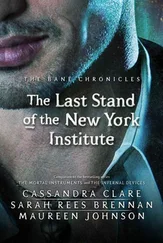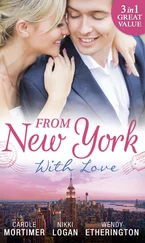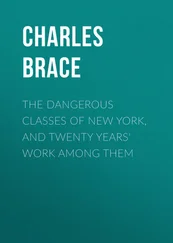Murray discussed books, baseball, and politics with equal fascination and interweaved them all, if you could only see the pattern. He knew the details of everything, from Shoeless Joe Jackson’s batting average the year before the World Series to Thomas Jefferson’s reading preferences after he left the presidency. While we were both covering the Teamsters Union convention in Miami that elected Jimmy Hoffa president, I found Murray in his hotel room poring over what he said was the key to understanding this whole damn thing—Robie Macauley’s new introduction to Ford Madox Ford’s novel Parade’s End .
Once I had lunch with Murray and with Marion Magid, whom I thought of as one of the most brilliant and witty people I knew in New York. Even she sometimes felt daunted by the rush of Murray’s conversational connections and allusions. “After lunch with Murray,” she told me, “my mind is so tired I feel like I have to lie down for an hour.” We ate at Le Moal, a fancy East Side French restaurant near the office of Marion’s magazine where many of its editors dined, and Murray dubbed it “the Commentary commissary.” That consonance reminded him of the time he was having lunch at an Italian restaurant during the McCarthy era. As the diners discussed who was now an anti-Communist and who had become an anti -anti-Communist, the waiter came. A jaded reporter, despairing of getting everyone’s latest affiliation straight, tossed aside his menu and said, “I’ll have an anti-antipasto.”
Toward the end of the summer of my work for Mills in 1955, I began to read about the case of a Negro boy from Chicago named Emmet Till, who was murdered in Mississippi for the crime of whistling at a white woman. The trial, scheduled to take place in the little town of Sumner, in the Mississippi Delta, promised to be one of those turning points in our history, a classic American courthouse drama like the Scopes trial, and I ached to go down and write about it. But not only did I need money to get there; I had to have credentials. I needed an assignment, and yet I hadn’t published anything in a magazine and so had no contacts. I called Murray Kempton.
Murray was to cover the story for the Post , and he’d also been asked to do a piece for The Nation , which he didn’t feel he could or should write in addition. He picked up the phone and told the editor of The Nation that he ought to let a young guy named Dan Wake-field do the story for him. Completely on Murray’s recommendation, The Nation gave me a letter of introduction as credentials and the bus fare for the trip (I think it amounted to forty bucks).
When I got the assignment, a line came into my head by John Reed, who wrote somewhere that when he knew he was going on one of his first foreign stories, it was like “being on the edge of a beautiful dream.” I was there. The dream was not just the story, and not just the nightmare of Emmet Till’s death, but the opportunity of being on the scene to transcribe in my own words a meaningful moment in American history, and the promise of doing it again in other places, for other big stories.
On the bus that took me to Sumner (“A Good Place to Raise a Boy,” a sign just outside town proclaimed with what seemed now a dark irony), I purposely sat next to a Negro woman, as if to show my comradeship. She smiled and asked me, “Are you a young lawyer?”
“No, ma’am,” I said. “I’m a reporter, from New York.”
It was on that trip that I first felt justified in identifying New York as my home. I went around the racially tense town in the Delta—even knocking on people’s doors to interview them about the controversial case that was making headlines—proudly identifying myself as a reporter for The Nation , “in New York.” It was hardly a way to win favor. Just being a reporter from up north was enough to get me taken for a ride by two sheriff’s deputies, who dropped me in the middle of nowhere so I had to walk back to town in the gathering dark. I was lucky a ride was all they gave me.
I felt no fear because I was young and naïve, and also because Murray Kempton was there, to introduce me to the other reporters and make sure I knew what was going on. He saw to it that I had a room in town, and that I got out of there when the other reporters left for a motel in the bigger, less tense city of Greenville to write their stories, so I wouldn’t be the lone Yankee in Sumner after the trial.
The trial in the small, sweltering, segregated courtroom was indeed classic, with the murdered boy’s uncle, an aged Negro field hand named Moses Wright, testifying against Roy Bryant and J. W. Milam, the two white men accused of the brutal murder. Their acquittal was a foregone conclusion of white supremacy ruling over law. The drama set the stage for the conflict to come, the struggle for civil rights in the South, in which Mose Wright was only the first of the long-oppressed people of his race to stand up, in the face of threats and against the whole weight of tradition and power in the region, and proclaim the right to the freedom they were supposed to have received the century before.
I sat up all night writing so that I could file my report at Western Union the next morning, to make the deadline. I finished at dawn. The lead of my piece summed up my perception of the trial and the situation we were now to observe as it went through its struggle to change in the decade to come: “The crowds are gone and this Delta town is back to its silent, solid life that is based on cotton and the proposition that a whole race of men was created to pick it.”
The Nation ran the story, “Justice in Sumner,” with my byline, and suddenly I was a published writer in a national magazine. I bought up all the copies at the local newsstand and passed them out like cigars—this, in fact, was a birth. The editors and, more important, the publisher of The Nation liked the piece and wanted me to come in and meet them and talk about doing more work.
The offices of The Nation were at 333 Sixth Avenue, at the corner of West 4th Street in the heart of Greenwich Village. There was nothing colorful, however, about the dreary old building that housed the magazine. You took a rickety freight elevator to the fourth floor and saw an elderly telephone operator at one of those old-fashioned switchboards with wires that plugged into little sockets to connect calls, the kind you see in black-and-white movies from the thirties and forties. The operator also acted as receptionist, and you waited until she finished answering and connecting calls to say who it was you wanted to see.
The editor in chief was Carey McWilliams, a liberal journalist who had written a well-respected book called Factories in the Field , an account of migrant workers in California. Carey’s working-editor garb was a gray cardigan sweater he buttoned halfway up his white shirt with tie; his jacket hung on a coatrack by his desk. He always had on those shoes specially formed for the feet, which reminded me of the kind Frankenstein wore—one Nation contributor, Norman Thomas di Giovanni, called them space shoes. Norman, in fact, called Carey “Space Shoes” or “Space” or “Old Space,” a nickname that made me giggle and seemed so suitable I couldn’t help using it for McWilliams myself, though we never said it in front of him.
Norman was the only Nation writer I knew who was, like me, under thirty—the rest of the staff seemed to be over forty or even fifty, which was ancient to us. Norman was an Italian-American anarchist from Boston with an Oberlin College degree who was working on a book about Sacco and Vanzetti. I stayed on his cot in a cold-water flat in the North End when I visited Boston, and he slept on a blanket on my floor when he came to New York.
Читать дальше












